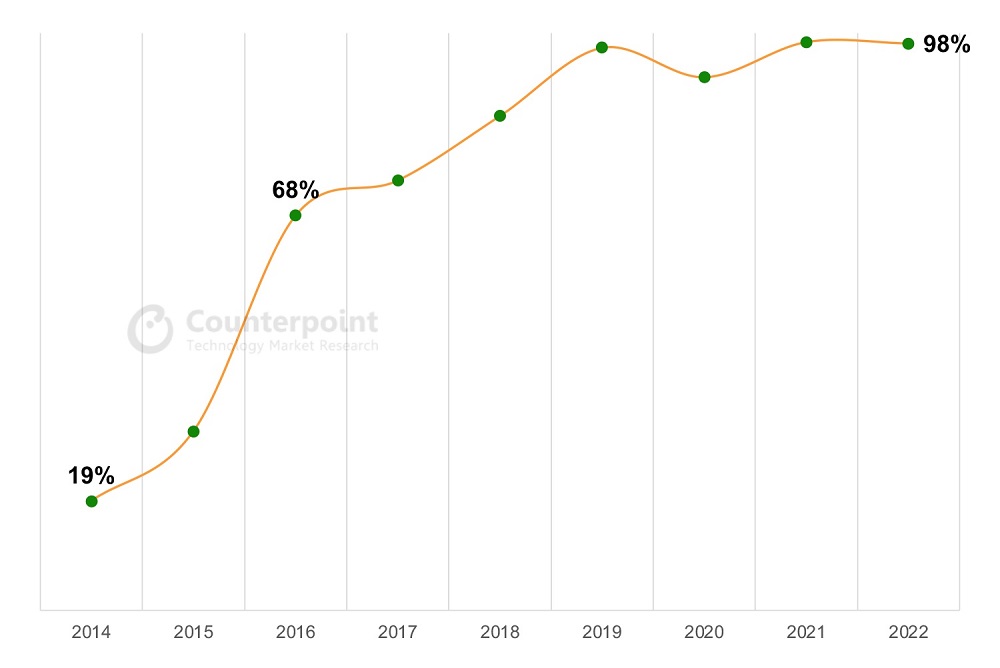India has now become the world’s second-biggest manufacturer of mobile phones after producing over 2 billion mobile phones between 2014 and 2022.
Thanks to the Make in India initiative, the country’s mobile phone production increased to a Compound Annual Growth Rate (CAGR) of 23%.
As per the report, the cumulative shipments of domestically produced cellular phones surpassed 2 billion units between 2014 to 2022. To compare, in 2014, domestic shipments only made up 19% of India-made phones while in 2022, the statistics to see 98%.

Counterpoint Research Director Tarun Pathak said in a blog post that India has gone from being an importing country to being self-reliant on mobile phones in recent years. He said:
“India has come a long way in mobile phone manufacturing. We have seen local manufacturing increase over the years to meet domestic demand. In 2022, more than 98% of shipments in the overall Indian market were ‘Made in India’, compared to just 19% when the current government took over in 2014. We have also seen increasing local value addition and supply chain development in the country.”
Also read: India to bring Live TV on Mobile without internet with D2M technology
What contributed to this feat?
Various plans and policies helped stir the country to become a leading mobile phone maker. Internal demands, digital literacy, and government incentives to the OEMs all were pivotal. Likewise, “Make in India, Phased Manufacturing Programme (PMP), and Atma-Nirbhar Bharat all equally contributed to this development. In a similar vein, the country is also stamping an import ban on laptops, tablets, and other electronics with a zeal to promote Made in India electronics.
Pathak added “Local value addition in India currently stands at an average of more than 15%, compared to the low single digits eight years ago. Many companies are setting up units in the country for manufacturing mobile phones as well as components, leading to growing investments, increasing jobs, and overall ecosystem development. The government now intends to capitalize on its various schemes to make India a ‘semiconductor manufacturing and export hub’. Going forward, we may see increasing production, especially for smartphones, as India gears to bridge the urban-rural digital divide and also become a mobile phone exporting powerhouse”.
Senior Analyst Prachir Singh voiced a similar rationale. “The Indian government has launched and executed many schemes, which has resulted in a big jump in mobile phone manufacturing over the years. Under the ‘Make in India’ initiative, the government introduced the Phased Manufacturing Program and increased import duties on completely built units and some key components over the years to push local manufacturing and value addition. Under the Self-Reliant India scheme, the government introduced the Production Linked Incentive (PLI) scheme for 14 sectors, including mobile phone manufacturing. Due to all this, exports from India have increased”.
He said that in addition to the mobile phone market, the government will accelerate its efforts to become a key semiconductor hub. The Indian authorities will inject $1.4 trillion to build infrastructure under its semiconductor PLI scheme.
Globally leading firm Foxconn is planning to amplify chip investment in India after cutting off a potential deal with Vedanta. Similarly, AMD has also announced a $400 million investment for a chip design center in Bengaluru. It’s high time for India’s IT industry as it continues to attract global firms to the country while the domestic market also booms. The ban on laptops and tablet imports will also help in promoting domestically made consumer electronics.
